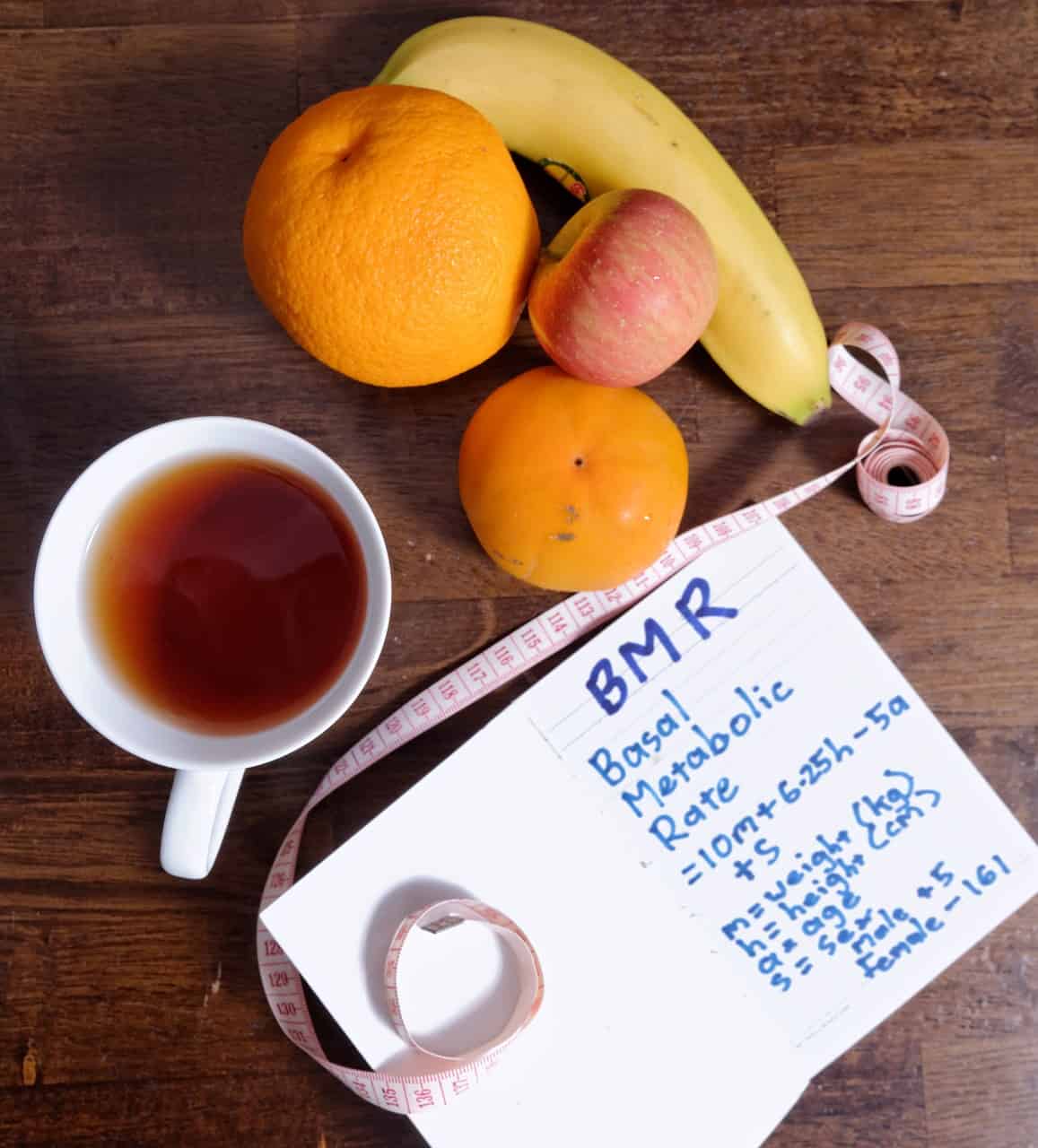
Most adults have an activity factor in the range of 1.2 (sedentary) to 1.5 (moderately active). The resulting value can then be modified by an activity factor to determine the daily calories required to maintain current weight.

Females: BMR = 655 + (9.6 × weight in kg) + (1.8 × height in cm) – (4.7 × age in years).Males: BMR = 66 + (13.7 × weight in kg) + (5 × height in cm) – (6.8 × age in years).kg) To be measured accurately, BMR should be taken in a temperature controlled, laboratory or clinical setting when a person is awake, inactive and postabsorptive (defined as the period of time that follows digestion and absorption of food by the body).Ī person’s BMR can also be estimated using the Harris-Benedict formula:.It is expressed as ml O2/min or joule per hour per kg body mass J/(h Metabolic rate is usually measured by calculating oxygen consumption or carbon dioxide production via indirect calorimetry. A person’s BMR is also partially dependent on their genes, meaning that you can be genetically susceptible from birth to having a low or high BMR. Furthermore, in females, it is likely that BMR fluctuates slightly during the menstrual cycle, however, the studies on this are limited. Higher muscle mass is associated with a higher BMR. In humans, age, gender, genetic background, and physical fitness level can affect BMR with advancing age and reduced fitness levels contributing to a lower value.

It also determines the rate at which an individual can burn calories, thus demonstrating an association with his or her body mass.īMR is one of the most widely measured physiological traits however, it exhibits significant variability across, and even within, species. It is a measure of an organism’s capacity for growth, maintenance and reproduction.

Once you have your BMR, it's time to take the same kind of strategic approach to the rest of your training and nutrition.A person’s Basal Metabolic Rate (BMR) is the rate of energy expenditure required to keep the body functioning whilst at rest. Being armed with this knowledge, rather than guesstimating or blindly following a plan without scaling it to your individual needs, can make or break your muscle gains or fat loss. Once you use your BMR to determine your TDEE, you can make sure that the nutrition plan you follow is appropriate for your level of energy expenditure and that it isn't giving you too many or too few calories. How Can I Use My BMR to Lose Fat or Gain Muscle? If the equation uses RMR, use our RMR calculator, which will give you a slightly higher number. If it's based on BMR, you can use the calculator above to get an estimate. The term BMR is sometimes used synonymously with RMR, which stands for "resting metabolic rate." The difference is that while BMR only measures basic processes of breathing, blood circulation, and temperature regulation in a completely resting state, RMR also includes energy expended by digestion and non-exercise daily movements, like getting dressed and lifting your fork to your mouth.īMR and RMR numbers are typically close enough to be interchangeable, but if you're calculating your needs in order to gain or lose weight, pay attention to which number an equation calls for. What's the Difference Between BMR and RMR? Keep in mind, though, that it's impossible to know your exact TDEE, as your activity levels will change day to day, and the only way to get 100 percent accurate BMR numbers is through laboratory testing. You can use a TDEE calculator or calorie calculator to find this number to get a more specific result. This varies significantly based on your activity level, age, and sex. It's determined based on your BMR as well as your activity level throughout the day. The overall number of calories your body uses on a daily basis is referred to as your "total daily energy expenditure" (TDEE). This means that when you have a lot of muscle mass, you'll burn more calories at rest. However, increasing muscle mass does increase BMR, because muscle is metabolically "hungry" and it takes more energy to maintain more muscle. Since your basal metabolic rate is based largely on involuntary functions like breathing and pumping blood, changes in your day-to-day activity don't do much to raise or lower this number.

Here's how it works:įor men: BMR = 66.5 + (13.75 x weight in kg) + (5.003 x height in cm) - (6.755 x age in years)įor women: BMR = 655.1 + (9.563 x weight in kg) + (1.850 x height in cm) - (4.676 x age in years)īear in mind that this doesn't take your activity level into account! 's calculator uses the Harris-Benedict equation, which is considered by many experts to be the most accurate BMR calculation for most types of people.


 0 kommentar(er)
0 kommentar(er)
